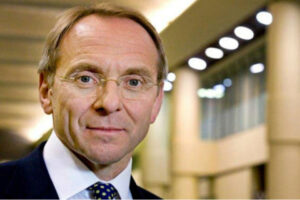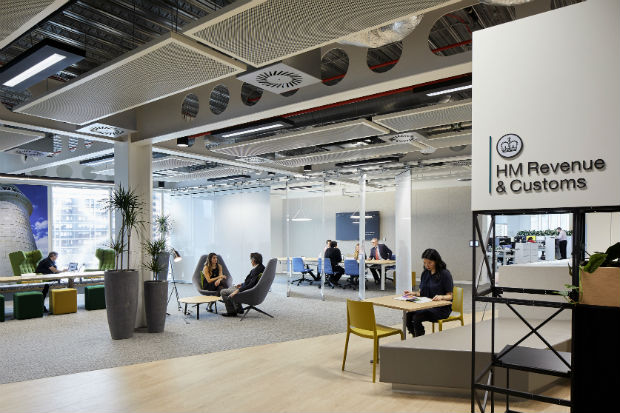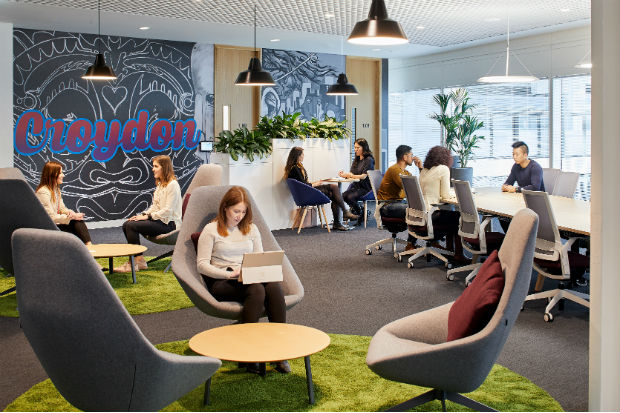
In April this year, the Reform think tank invited me to speak about Smarter Working in the Civil Service.
The venue for the speech, appropriately, was the BT – formerly the Post Office – Tower. Appropriately, because BT was one of the early advocates and adopters of Smarter Working, and because the tower has additional symbolic relevance. Once the UK’s tallest building, it was state of the art in construction techniques, and a flagship for advanced communications, at a time when microwave technology was considered the future of telecoms. But it had to adapt to changes in technology, and did so successfully, becoming, in 2016, the highest building in the world to host an Internet of Things base station.
That’s relevant because technology is so influential in the way we work and changes so fast. We have to be alert to those changes – not just technological, but social and cultural – adjusting to them in how we think about our workplaces, if we are to function at our best.
Work is about what you do
But how does Smarter Working contribute to our becoming a 21st-century Civil Service?
A central principle of Smarter Working is pretty simple – it says that work is really about what you do, not where you do it. It’s about the quality and effectiveness of the outcomes.
For the public sector, that means finding new and better ways of designing and delivering public services that are focused on what citizens need.
We want the Civil Service to be the best place to work. Smarter Working taps into something in the synthesis of people, place and culture that is fundamental for determining the most effective ways of working, and we can use this to create the best outcomes for the citizens we serve.
Smarter Working is also one of the drivers that will attract the civil servants of the future, because it understands that a happier, more productive workforce and better outcomes are inextricably linked.
Code of practice
How are we embedding Smarter Working in the Civil Service? And what’s the evidence that it delivers results in: better work/life balance for our employees, with advantages for recruitment and retention; greater openness to diversity; better mental and physical health; and more effective use of property?
Government has pulled together best practice and evidence into a national standard, PAS3000, a Code of Practice for organisations in all sectors. And our most recent Government Estate Strategy goes deeper than just reducing our estates footprint and saving money – it enshrines the Smarter Working principles.
Part of that strategy is to baseline against the Smarter Working PAS 3000 standard. It identified 18 departments with established Smarter Working programmes, with 7 more already showing as mature. And we’ve seen a link between departments with Smarter Working programmes and increased staff satisfaction.
Staff satisfaction
• After the Home Office’s recent workspace redesign, which introduced a desk ratio of 1 to every 2 members of staff, the staff survey showed a 4% increase in employees feeling they have the right tools to do their job.
• After Ofgem moved into the new Government Hub in Canary Wharf - designed to Smarter Working standards -survey results showed a 3% rise in teams recommending Ofgem as a great place to work.
• DCMS met the challenge of a 300% increase in staff by redesigning their existing workspace. With only a 20% increase in square footage, the department delivered a 200% increase in ‘places to sit’, and an annual saving of £3 million.
• The MOD’s Defence Infrastructure Organisation reduced its head office footprint by over 50%, staff travel by 20%, and improved the success of recruitment campaigns by being able to target a wider pool of applicants.
• A Welsh Government Smarter Working pilot in Merthyr Tydfil resulted in the highest levels of staff engagement across the Civil Service, with staff reporting reduced stress levels.

New career paths
Of course, the physical environment helps people feel comfortable at work and perform better. But we are also looking at how we achieve the right mix of skills in the Civil Service. This is necessary to refocus our efforts on delivery, complementing traditional strengths in policy-making – and it represents a fundamental shift in the balance of skills and experience in civil servants.
To achieve this we’re laying down new career paths that flow from the specialist professions and give more opportunities for civil servants to acquire depth of professional expertise.
We want young people entering the Civil Service to see a way ahead to learn the skills they need, accumulate deeper experience and build a career in their chosen profession. We can certainly offer that experience, because we do more commercial deals, more infrastructure, more communications – more of pretty much everything – than any other employer.
We are making a complementary change in how we reward our people, with flexible remuneration structures that recognise specialist paths.
Through the functions and specialist professions, we are stitching into the fabric of every department the professional expertise we need in vital disciplines, from finance, to digital, to commercial, project delivery and human resources.
To reflect this change, we are taking a broader and more inclusive approach to all our recruitment and internal promotion, with Success Profiles. This moves us away from an overreliance on basic competencies. These still matter, but we are looking at the full picture of what candidates can bring to the job – their track record, technical ability, behaviours and values. For the leaders of the future, this means confidence beyond their immediate profession, and a preference for collaborative working across boundaries.
Government Hubs
We also need to find ways of making it easier to collaborate across the silos that exist in our organisation.
Part of the solution is to accommodate teams from different departments in a single space, as we’re doing with the UK-wide network of Government Hubs. Co-location in these modern workspaces, with up-to-date technology, encourages collaboration and a combined response to the needs of users, while at the same time offering broader career opportunities for our workforce.
Some 8,000 civil servants already enjoy these benefits in the Croydon and Canary Wharf hubs. Another 12 are in delivery for a further 48,000 civil servants, with plans for more across the UK. And that means being more widely dispersed and not so disproportionately located in London and the South East.
Connecting with communities
The Places for Growth programme is central to the long-term goal of taking departments, agencies and other public sector bodies closer to the people they serve. This means creating more senior roles – and career paths – beyond the areas where historically senior civil servants have been concentrated. This will allow us both to access and support local talent and better connect with communities.
This work is already progressing: in Leeds, with the Department of Health & Social Care; in Birmingham, growing our transport-focused presence; and in Manchester, capitalising on its established media hub.
The Government Estate Strategy embraces all of this – it reflects our ambition to ensure that public services better meet customers’ needs; it generates more land for housing; and it supports regional growth and opportunities, while ensuring we optimise efficiency across our estate.

Becoming the most inclusive employer
But to fully connect with the people of this country, the Civil Service has to reflect communities in all their diversity. Diversity is at record levels: 53.9% of civil servants are women; 12% are from ethnic minorities; and 10% have a disability. 44.2% of senior civil servants are women. For ethnic minorities and people with a disability, across the whole workforce and at senior levels, Civil Service diversity has risen consistently since 2010 and today stands at record levels.
This is great progress, but we need to do more to realise our ambition of being the UK’s most inclusive employer by 2020.
Inclusion is more difficult to measure. We’re working with other employers and the Chartered Institute for Personnel Development to agree a new measurement framework.
However, the latest People Survey results relating to inclusion show that how staff feel they are treated is at an all-time high (78%); and responses to a new question show 75% feel their organisation is committed to creating a diverse and inclusive workspace.
How and where we work, our connection with communities and how citizens experience our services, are underpinned and enabled by technology.
You can now check the performance of approaching 800 services online, from high-volume services like the vehicle tax checks by individuals, and the multi-million State Pension claims and passport applications, down to niche ones, like import licence applications for pets and rare birds. Technology is also driving modernisation in the benefits system, with Universal Credit; and the Justice system, through the Courts Transformation Programme, to name just two. The next step is to apply technology to the maximum in internal processes.
We have started to apply robotic process automation (RPA), but so far in only a few places.
HMRC is the main early adopter of RPA in government, using it for processes associated with student loans, the tax self assessment dashboard, the tax credit digital service. Automated services like employer registration reduce processing costs by around 80%. And employers who register with HMRC to start paying staff receive confirmation three times faster than before.
We plan to accelerate our use of RPA, exploiting the potential for better, more efficient, and more accurate service delivery, while taking advantage of the opportunity to deploy employees into more customer-facing work.
Fundamental transformation
These developments in how we leverage the elements of Smarter Working – the combination of people, place and culture – to deliver better outcomes for the public we serve, amount to a fundamental transformation in our working practices, skills and capability, leadership, and culture. They sum up our progress towards becoming A Brilliant Civil Service.
We are not there yet. And we should treat exceptional demands, including preparations for EU Exit, as accelerants to greater efficiency and effectiveness of the sort that Smarter Working enables – the sort of improvements necessary if we are to tackle not only EU Exit, but everything required of us in the day-to-day running of government and public services.
1 comment
Comment by CT posted on
Why do we need to maintain large office complexes, with all the enormous associated overheads/impacts on local pollution etc? In so many areas the technology now allows us to everything mobile/home working, rather than being sat at a desk, having travelled in and using lots of resources.
Unfortunately a lot of people seem to be wedded to the idea that being in work means sat in an office and then usually sat in traffic on way home.
What matters is outputs and results, not where you do your work.
Personally, I find it much less stressful to work remotely without noisy open plan offices and the daily commute where large amounts of CO2 are pumped into the atmosphere. The culture seems to have hardly changed since the 1980s and we really need to be changing the way we do things.
In the process we will benefit ourselves, our local communities and our environment.
The same goes for meetings, technology is now widely available to run meetings remotely, thus saving time, costs and again with clear environmental benefits.